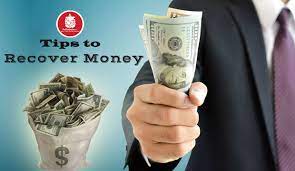
In the fast-paced world of trading, where fortunes report a cryptocurrency scam can be made or lost in the blink of an eye, the allure of quick profits often blinds people to the lurking dangers. One of the most insidious threats in the trading environment is the prevalence of trading scams. These schemes exploit the hope for high returns, preying on both novice and experienced traders alike.
The Anatomy of a Trading Scam
Trading scams come in many forms, but they generally follow a few common patterns. At their core, these scams exploit the basic human desire for easy money. They often present themselves as legitimate investment opportunities, offering promises of high returns with minimal risk. Here’s a breakdown of how these scams typically operate:
- The Pitch: Scammers use persuasive tactics to attract victims, often through unsolicited emails, social media ads, or even personal referrals. They present themselves as experienced traders or financial advisors, making grandiose promises of returns that seem too good to be true.
- The Setup: Once they’ve gained a victim’s trust, scammers encourage them to invest in their scheme. This might involve depositing money into a trading account, purchasing fake financial instruments, or even paying fees for supposedly “exclusive” trading signals.
- The Ruse: With the initial investment in place, the scammer continues to build credibility. They might use fake trading platforms that show impressive gains or provide falsified performance reports. The goal is to keep the victim engaged and hopeful.
- The Exit: The scam often culminates in the scammer disappearing with the invested funds. When the victim tries to withdraw their money or questions the performance, they may face obstacles or discover that the platform is non-existent. In many cases, the scammer’s digital footprint evaporates, leaving no trace.
Types of Trading Scams
- Ponzi Schemes: Named after Charles Ponzi, these schemes promise high returns with little to no risk. New investors’ money is used to pay returns to earlier investors, creating a façade of profitability until the scheme collapses.
- Pump and Dump: In this scam, perpetrators artificially inflate the price of a stock or cryptocurrency through false or misleading statements. Once the price is high, they sell off their holdings at a profit, leaving other investors with worthless assets.
- Forex Scams: The foreign exchange market is rife with scams, from fake brokers offering high leverage to fraudulent signals that promise guaranteed profits. These scams exploit the complexity of the forex market and its regulatory gaps.
- Binary Options Fraud: Binary options trading involves betting on the price movement of assets. Scammers often create fake platforms where traders are encouraged to make bets with little chance of winning, ensuring that the scammer profits while the trader loses.
Spotting the Red Flags
Avoiding trading scams requires vigilance and a critical eye. Here are some red flags to watch out for:
- Unrealistic Promises: Be wary of guarantees of high returns with minimal risk. All investments carry some degree of risk, and legitimate opportunities do not promise guaranteed profits.
- Pressure Tactics: Scammers often create a sense of urgency, pressuring individuals to act quickly. This could be through limited-time offers or claims of a “once-in-a-lifetime” opportunity.
- Lack of Transparency: Authentic trading platforms and advisors are transparent about their operations, fees, and risks. If information is vague or difficult to obtain, it’s a warning sign.
- Regulatory Red Flags: Verify that any platform or advisor is regulated by a reputable financial authority. Regulatory bodies help ensure that financial operations are conducted ethically and transparently.
Protecting Yourself
To safeguard against trading scams, consider the following steps:
- Conduct Thorough Research: Investigate any trading platform or advisor before committing funds. Look for reviews, check regulatory status, and seek advice from trusted financial experts.
- Educate Yourself: Understanding the basics of trading and investment can help you recognize potential scams. Educated traders are less likely to fall prey to fraudulent schemes.
- Be Skeptical: If an offer seems too good to be true, it probably is. Trust your instincts and be cautious about unsolicited investment opportunities.
Conclusion
Trading scams represent a dark side of the financial markets, exploiting human greed and lack of knowledge for nefarious gain. By remaining vigilant and informed, traders can better protect themselves from these deceptive practices. Remember, in the world of trading, the best defense is a good offense—knowledge and skepticism are your greatest allies.
